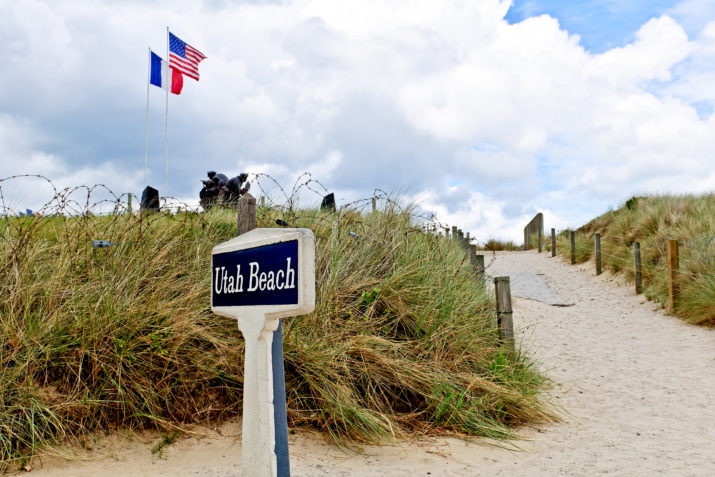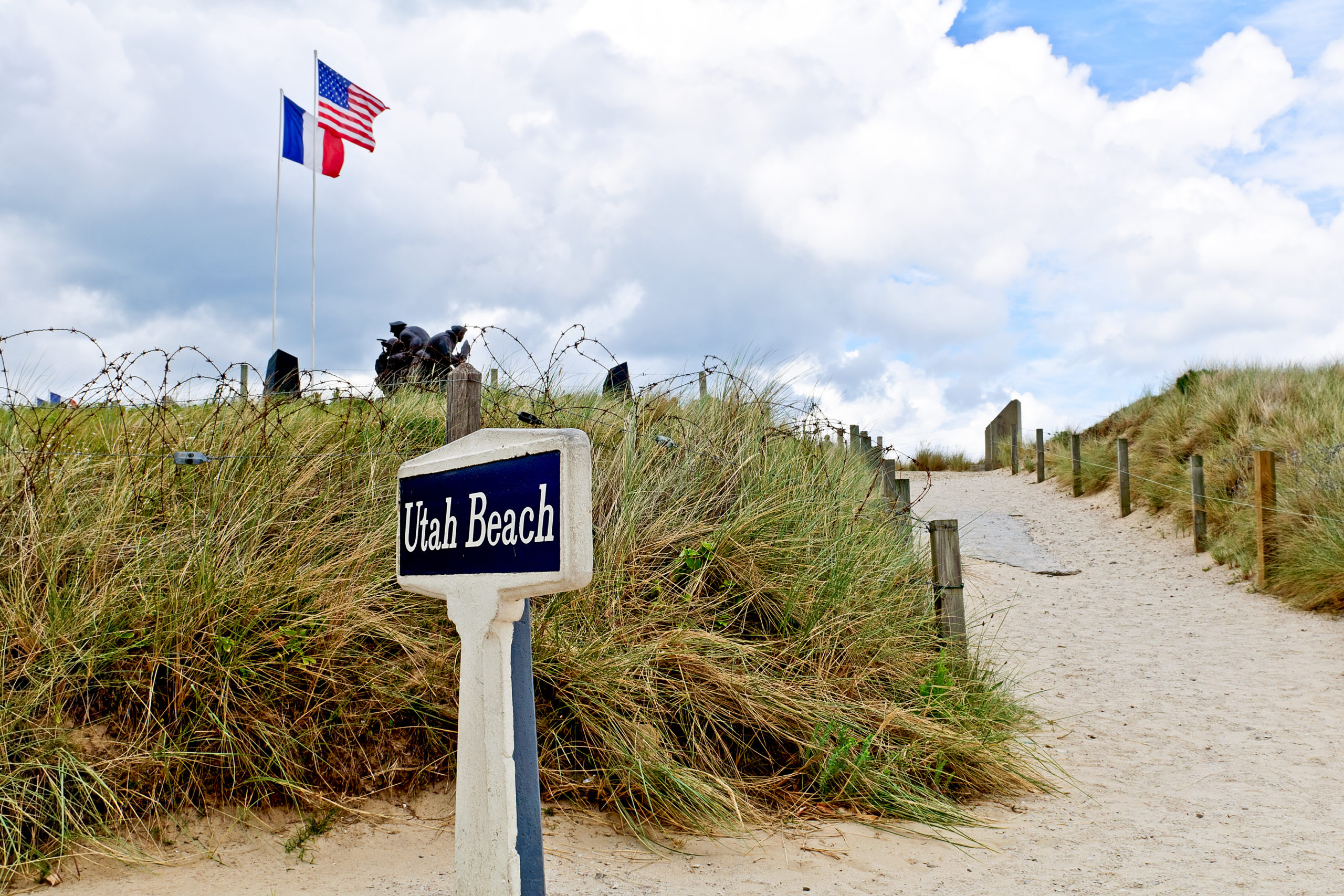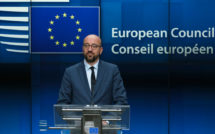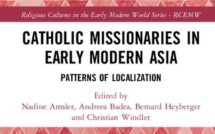

This is part of our special feature, Imagining, Thinking, and Teaching Europe.
In Spring 1981, I received my doctorate in Romance Languages and Literatures from the University of North Carolina. My field was Twentieth-Century French Literature (the study of national literatures was then divided by centuries) and I wrote my dissertation on the idea of the tragic in the theatre of Henry de Montherlant, a misogynistic and austere writer[1]whose first theatrical successes were performed in Paris during the German Occupation between 1940 and 1944.
Like other young academics entering their careers at that point in time, I anticipated a life of researching and teaching the beauties and subtleties of French literature and, with luck and hard work, of establishing myself one day as one of the world’s leading authorities on Montherlant, and who knew, perhaps even on modern and contemporary French theater? Not being trained as a comparatist and with no background in the theatre, I entertained no delusions that I could become, or even venture successfully into the study of the theatres of other national cultures. Being in French studies, those other national cultures would obviously be European cultures because Europe, to a French student at the time, was the source from which all culture, and certainly French culture, had arisen.
Then, a curious thing happened. While studying Montherlant’s wartime plays, I became interested in the German Occupation of France, the so-called “Dark Years.” I became interested in their impact on French life and culture, and because I admired his work so much, on Montherlant himself. At the time, I had only the vaguest notion of what the Vichy Regime was, or for that matter, what Nazism was. Words like “collaboration” and “attentisme” carried no particular connotation, at least for me. Literary studies, as I had been trained in them, had largely evacuated “history,” and certainly modern history and World War II. We studied writers, and writers’ influence on other writers, artistic schools, etc. But now, reading Montherlant’s La reine morte and its tragic and deeply political story of a faraway Portuguese kingdom from centuries before, and imagining the Occupied Paris, the Dark Years during which the play had first been performed, I became hooked on something very different and, for me, much more immediate and important than Montherlant’s play. I needed to know about and understand World War II.
In what follows, I’d like to briefly trace out where the “discovery,” so to speak, of World War II led me as a teacher and scholar of French Studies. That discovery was incredibly fortuitous because, although I had no way to know it at the time, it started me on an intellectual adventure that many in my generation in French as well as European studies shared. That adventure changed our fields dramatically and indelibly. Indeed, imagining doing the kind of graduate studies where specific national literatures are watertight and timeless categories of study is hardly imaginable in today’s globalized, and largely traumatized world. But, risking a cliché, where something is lost, something is gained. So let me begin…in the middle.
An invitation to Paris
In August 2000, I received a letter from Université Paris III (Sorbonne Nouvelle) informing me that I had been elected by the faculty to serve as a Visiting Professor (Professeur Associé) of French literature and civilization in Spring 2001. As a professor of French literature in an American public university, I was thrilled.
I could not imagine a higher honor, and accepted immediately. The reason I was nominated and elected by the faculty of Paris III was made clear in the courses I was assigned to teach. I would teach a lecture course to upper level undergraduates on the “Literary Vichy Syndrome.” The term “Vichy Syndrome” had been coined by the brilliant young historian Henry Rousso in his 1987 book by that name to describe the tenacity and evolution of the memory of World War II in postwar French life. My course was intended to trace the fluctuations and stages of the memory of World War II in postwar French fiction, from writers of the period like the notorious anti-Semite Louis-Ferdinand Céline to more contemporary writers like Marguerite Duras, Patrick Modiano, and others.
I was also asked to direct a doctoral seminar on the fiction of Patrick Modiano (awarded the Nobel Prize for Literature in 2014) and the so-called mode rétro, the troubling period in the late 1960s and 1970s when Nazism and fascism more generally re-emerged as a kind of nostalgic, chic, and troublingly eroticized fashion. Modiano had launched his career at that time. A literary wunderkind, he captured the mood and ambivalence of the mode rétro in a trilogy of novels dealing with what the French call the “Dark Years” of the German Occupation. France was not the only European country to experience the mode rétro. Films by Italian directors Lina Wurtmuller (The Night Porter) and Luchino Visconti (The Damned) offered up unsettling stories which emphasized the seductions (and perversions) of fascism at a time when censorship in the film industry were being relaxed. In France, the filmic epitome of the mode rétro was Louis Malle’s Lacombe Lucien (the script was co-authored by the young Modiano). The film tells the story of a romantic (and sexually charged) affair between an ignorant peasant boy working for the Nazi police and a sophisticated Parisian Jewish girl on the run with her family in summer 1944 as France was about to be liberated. Blurring the lines between collaboration and resistance, Lacombe Lucien remains controversial today.
Although I was a specialist on the topics I was asked to teach, it struck me as curious that a foreigner was being asked to deal with a subject so sensitive and close to the French national psyche at the time. The 1990s had marked a watershed moment in the troubling “afterlife” of the Vichy period in French public life, with the 1994 scandal over socialist President François Mitterrand’s extreme right wing and Vichy past, the resurgence of the extreme right in Jean-Marie le Pen’s Front National, and two trials on charges of crimes against humanity of wartime French officials involved in the Nazi “Final Solution” of the Jewish question. But as the colleague and friend who had nominated me to the position at Paris III explained, if a French academic tried to teach a course on the literary Vichy syndrome, this would be highly controversial. That academic’s colleagues would assume that the colleague in question was bringing a political bias to the material, perhaps even making an apology for those political views in the guise of teaching literature. This would especially be the case for someone who chose to teach collaborationist, pro-Nazi, and anti-Semitic writers like Céline, Pierre Drieu la Rochelle, Paul Morand, or Robert Brasillach. Besides, in French universities at the time and, to a degree subsequently, the teaching of literature emphasized a more straightforward disciplinary approach, taking into account French literary history and the formal qualities of the work, as opposed to “political” or “ideological” readings based on the author’s political views and the historical context in which the work was written.
My candidacy offered one more advantage, and that was that like a good number of American (and British) colleagues in modern and contemporary French studies at the time, my work had become increasingly interdisciplinary over the preceding decade and a half, embracing the fields of intellectual history, film studies, as well as ideology studies. In my own case, in the mid-1980s, I attended a National Endowment for the Humanities Seminar for College Teachers on the interwar years in France, in which we read works by writers of all political stripes and watched the great Poetic Realist films of Jean Renoir, Marcel Carné and others. The seminar, entitled “Politics of the Image,” changed my perspective entirely. I no longer believed in teaching French literature on its own in my university, but had students watch representative films from the period in question, and read representative contemporary journalism, political tracts, etc.
An American education in the 1990s: Fascism’s return, the Holocaust, World War II, and the end of the “Vietnam Syndrome”
There was another reason at that time in the United States that the intersection of politics, and especially fascist politics, and literary and critical studies assumed center stage. This was the so-called “De Man Affair” which broke in 1988. While doing research for his dissertation, a young Belgian scholar discovered that Paul de Man, the famed Yale professor and champion of Deconstruction had published numerous collaborationist articles in the pro-Nazi Belgian newspaper Le soirduring World War II. Given the prestige and pre-eminence of deconstructive criticism in literature departments in American universities, the uncomfortable link between wartime collaborationism and even Nazism and the pre-eminent critical paradigm of the day sent shockwaves through many university literature departments. Among other things, the connection between de Man and fascism and collaborationism with the Nazis raised the specter that much―if not all―post-structuralist criticism, through the influence of figures like de Man and the great German philosopher Martin Heidegger (whose own Nazi past once again under scrutiny on both sides of the Atlantic), might be “tainted” by fascism’s anti-democratic nihilism.
Once the floodgates opened, so to speak, critical works began to appear on the unsavory politics of many great writers and intellectuals whose work was central to the modernist and post-modernist canon. Ezra Pound, T.S. Elliot, the Italian Futurist Filippo Tommaso Marinetti, the German painter Emil Nolde, among many others came under critical scrutiny, and many scholars including myself began to attempt to define a “fascist aesthetics” that sought to decipher the impact of reactionary politics on artistic practices. In French studies, this meant that many modern French writers, once taboo for embracing collaborationist or Nazi politics, became the subjects of a good deal of critical study. These included Louis-Ferdinand Céline, whose banned pre-war anti-Semitic pamphlets were now unearthed and scrutinized; Robert Brasillach, a pro-Nazi journalist who had also written the first important history of French cinema; and even Jean Giono and Colette, whose championing of French peasant and provincial life dovetailed nicely with Vichy’s anti-modernist “return to the soil.”
In the world outside of academia, there were other reasons, of course, why World War II and the horrific legacies of Nazism, and most specifically the Holocaust, were coming into sharper focus before the general public. In 1980, at the initiative of President Jimmy Carter, the United States Holocaust Memorial Museum opened its doors on the mall in Washington. With it, the spread of education programs on the Holocaust in public and private secondary schools and universities. Then, in 1993, Stephen Spielberg’s Schindler’s List won the award for Best Picture at that year’s Academy Awards.
A few years earlier, the United States and its allies defeated Iraq in the Gulf War, and with that victory the onus of America’s humiliating military defeat in Vietnam seemed finally to pass. That, coupled with celebrations of the fiftieth anniversary of the D-Day landings in Normandy in 1994 and the publication of Tom Brokaw’s The Greatest Generation and the release of Spielberg’s Saving Private Ryan in 1998 produced enormous interest, not to mention pride in the United States in the nation’s sacrifices and triumph in World War II.
From the teaching of World War II to the perils of the present
I mention these (well-known) developments, in part, because they helped make possible one of the most rewarding teaching experiences of my career. In 1994, a friend and colleague at Texas A&M University and I directed our first of several National Endowment for the Humanities Summer Seminars for American school teachers K thru 12 on the history and memory of World War II in France. The primary location of the seminar was Caen, in Normandy, at the Mémorial, France’s national museum of the history of the débarquement, or the Normandy landings. Over the next twenty years, we took almost two hundred school teachers at all levels, public and private, to Normandy to study the war and its legacies. A highlight of the stay was a two-day bus tour, with France’s leading authority on Hitler’s Atlantic Wall at the time, Rémy Desquesnes. In addition to the beaches and cemeteries, we visited Nazi batteries, local museums, and even a V-2 launching pad, sitting in the middle of a lovely farm field and now used for the storage of hay. Many of the participants had fathers or grandfathers, or uncles who fought in Normandy, and for them this represented a lifelong dream to be able to visit the landing beaches and the American cemetery at Colleville-sur-Mer. The participants also read iconic French fiction about the war and watched classic films including Marcel Ophuls’s powerful documentary, The Sorrow and the Pity, and the aforementioned Lacombe Lucien, which always provoked lively discussion within the group. Some of the high school teachers told us that the young French peasant protagonist who joins the Nazis was very much like many of their restless high school boys. For some of the teachers, the film served as a frightening reminder that in trying social circumstances, when normal values and traditions do not apply, many if not most adolescents can be seduced by political extremism at its worst. For the teenage protagonist of Malle’s film, the intoxication of power that comes with possessing a gun and being omnipotent in a town and society where he has been made an outsider (Lucien’s father is a prisoner of war, and his mother has taken up with a collaborator) are all that it takes to make him a bully, and even a killer.
There were some trying moments in our seminars as well. As part of our bus tour, the groups visited the German cemetery at La Cambe, hidden away on something of a back road and, until a small international peace museum was established there, very poorly advertised by French road signs. One reason is that along with German regular army units, SS men who had carried out numerous atrocities in France were also buried there. On one visit, a young Jewish high school teacher from New York who had lost many members of his family in the Holocaust refused to leave the bus, and angrily demanded why he had been brought there. His feelings were entirely understandable. But the German cemetery, too, had its poignant aspects. Among the soldiers buried under dark stone crosses were boys of fifteen and sixteen who had been conscripted into the German army as the German wartime circumstances become increasingly dire. And the contrast between the dark stone crosses at La Cambe and the glistening white stone crosses facing the sea at the American cemetery always stirred discussion in our seminars. For most Americans, World War II and Normandy form part of a glorious and sustaining past. For Germans, the war and Nazism remain part of a heritage of shame with which the nation still struggles. This contrast is reflected in the cemeteries we visited. When the NEH abruptly canceled seminars held abroad in 2014 as a result of political pressures in Washington, I felt strongly that this was a sad loss for many American schoolteachers who did not have the means on their own to visit Normandy, teachers who spent their entire careers in the classroom teaching the history of World War II.
From my experiences teaching the history and memory of World War II in an American university and in NEH Seminars as well as at Université Paris III Sorbonne Nouvelle in 2001, it seems clear to me that our cultures think and feel differently about the war, as a result of our very different experiences of it as nations. Monuments and cemeteries are for Americans solemn markers of pride, sacrifice, as well as final victory. They allow us emotional satisfaction, but also the ability to distance ourselves from these events in personal terms. Shortly before the Coronavirus crisis hit, my wife and I visited Pearl Harbor and Honolulu’s famous military cemetery of the Pacific, the “Punchbowl.” For me, the sentiment was very similar to Normandy. The experience was very moving, but at the same time somewhat impersonal. As a child of the Vietnam generation, the experience is very different and much more visceral when I visit the Vietnam Memorial. But then, the United States lost the Vietnam war.
For the French, however, the memory of World War II is much more nuanced, ambivalent―and necessarily personal. It seems appropriate, then, that French literature dealing with the war is more plentiful, richer, more varied, and indeed more troubling than works about World War II written in the US. When I taught the “Literary Vichy Syndrome” course at Paris III-Sorbonne Nouvelle, I had to pick and choose from an enormous quantity of novels (there was no time to talk about plays, or poetry about the war), and leave out many works I felt to be very important. The novels I chose dealt with a wide range of wartime experience—resistance, collaboration, attentisme (or a “wait-and-see” posture), the Holocaust and France’s role in it, and so on. The course also dealt with the individual writers’ political and historical views, by no means uniform, as expressed in these works. Many were most unsettling. For the students in the class, there was no comforting “distancing” possible. As the children of parents from the May ’68 generation, they did not have to deal with their own parents supposed “silence” about the war, but it was clear to me that many felt “engaged’ with these novels because as French, they had a very personal stake in the issues discussed. Moreover, in 2001, most of my students had grown up during the 1990s, when the Vichy past affected almost every aspect of French political and cultural life.
What about today? Obviously, the world has changed drastically for American university students since I first began teaching the history and memory of World War II. For today’s student, even 911 is part of the distant past, as are perhaps the wars in Iraq and Afghanistan, although many students at Texas A&M, given the University’s military traditions, have either served in the Middle East or have close relatives who have. Moreover, given drastic changes in technology, and the “presentism” of life today, students’ reading of fiction as well as their knowledge of modern history are often rudimentary at best. Moreover, since the election of Donald Trump as President, they have had to live through a sustained assault on historical truth that makes the past only what you believe, or need, or want it to be. It is not surprising then, that in a course I taught in Fall 2019 on “World Wars I and II in French Fiction,” several of the students had trouble at the outset with the precise dates of the conflicts in question, and many had difficulty with the subtlety of works like Patrick Modiano’s Dora Bruder. The work is a stunningly beautiful “novel” about the author’s effort to assemble the pieces of the life of an obscure (and real life) Jewish girl, Dora Bruder, who died with her parents at Auschwitz. But it is by no means a straightforward narrative.
But at the same time, as opposed to earlier periods in my career, it is now possible to teach World War II in a different, more globalized and interdisciplinary framework that is deeply satisfying. Ironically, this is due in part to the shrinkage or disappearance of traditional language and literature departments in American universities. This is one result of loss of prestige and influence of the humanities, an unfortunate development in itself, with dire consequences for the future. But just as there are disruptions, there are opportunities. Many language and literature departments like my own former Department of European and Classical Languages and Literatures, have merged with or morphed into “International Studies” departments. And many, if not most of these departments rely not only on more interdisciplinary teaching resources, they also force former specialists in French studies and other European studies disciplines (in my own Department, German, Russian, and Italian) to broaden our “Eurocentric” focus to more global contexts. In a course entitled “War and Memory,” I teach World War II and the Holocaust (for which the war is primarily remembered today by American students) But I broaden the lessons learned to discuss the war in Viet Nam, the genocides in Rwanda and Cambodia, and other recent traumas. And, in the era of human rights, we also look at the ways in which different peoples have tried to come to terms with these traumas, from international trials and tribunals, to local mediations, to truth and reconciliation commissions. For today’s students, many of whom are from widely divergent backgrounds, and are themselves the children of immigrants from these countries, these more recent, “global events” are very close to home, so to speak, much as the memory of Vichy was to my Parisian students in 2001. For this reason, it is a real pleasure to walk into class, not so much to present the material, but to get their reactions to it.
To conclude: interviewed not long after the extraordinary international success of his 2009 novel HHhH, about the assassination of Reinhard Heydrich in Prague in 1942, the young French novelist Laurent Binet stated that World War II was “our Trojan war.” Everything was there: courage, cowardice, romance, treason, the list went on. And Binet could have added, an unparalleled opportunity to teach students about the past, about the value and necessity of learning and understanding History with a capital “H” and its meaning and implications for the present. This is why, especially in the present circumstances, I am looking forward to returning to the classroom, whenever that becomes possible. If my own journey began with French studies, studying World War II may well lead some of these students there, but it can lead them to so many other places as well.
Richard J. Golsan is University Distinguished Professor in the Department of International Studies and Senior Scowcroft Fellow, the Bush School at Texas A&M University. His most recent book is The Vichy Past in France Today (Lexington Books, 2016) and he is currently writing a history of the 1987 trial of Klaus Barbie. He is Editor of the South Central Review.
[1] The great French critic Henri Peyre once described Montherlant to me as “A very great writer, a very bad man!”
Photo: Utah beach with memorial statue in normandy france | Shutterstock
Published on June 3, 2020.




